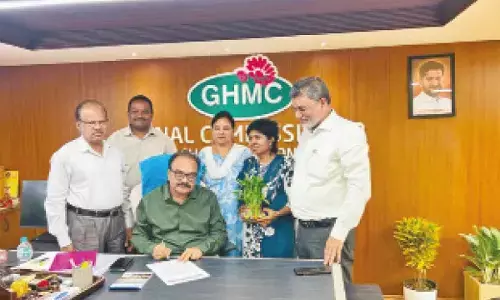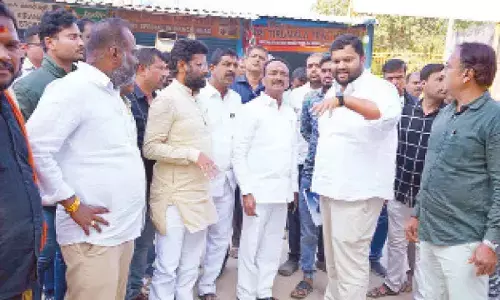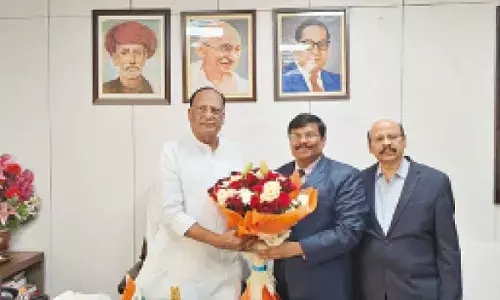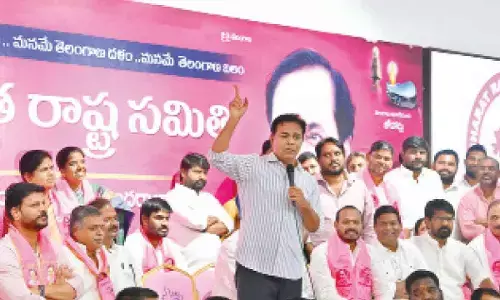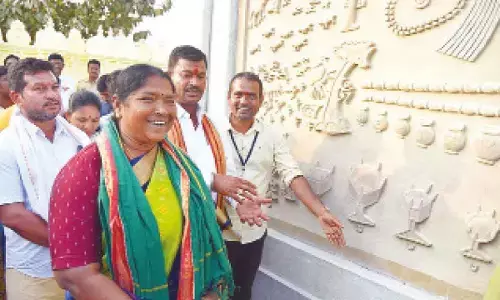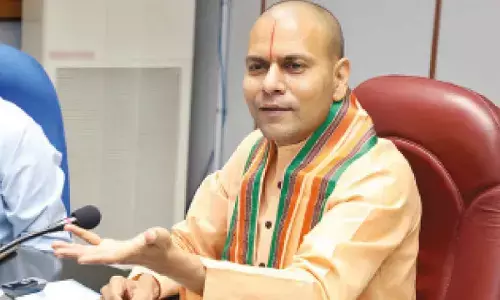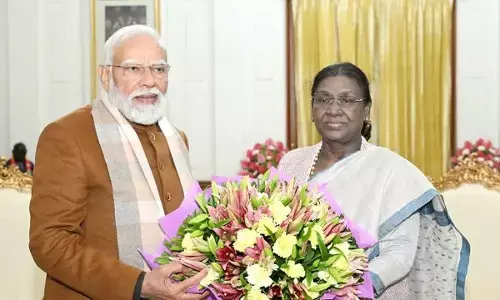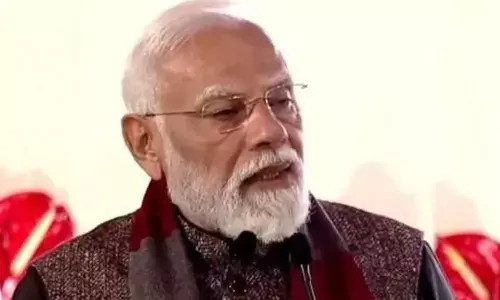History Repeats, Lessons Not Learnt

Witnessing complete inundation of Kashmir has been the most horrible experience of my life. Due to week-long continuous torrential rains in the bowl shaped mountainous valley, water came up to about six feet on Friday, September 5, in my quarters (CPWD) at Bemina, Srinagar. Some local people who stayed in my quarters predicted the nature’s fury.
Kashmir re-lived the horror of the 1893 floods in the first half of this month. Dr Johan Babu Koyye gives a first hand account of nature’s fury
Kashmir re-lived the horror of the 1893 floods in the first half of September. Dr Johan Babu Koyye, Professor in Central University of Kashmir witnessed, first hand, the fury that nature unleashed
.jpg)
Witnessing complete inundation of Kashmir has been the most horrible experience of my life. Due to week-long continuous torrential rains in the bowl shaped mountainous valley, water came up to about six feet on Friday, September 5, in my quarters (CPWD) at Bemina, Srinagar. Some local people who stayed in my quarters predicted the nature’s fury. My quarters were constructed in a very low lying area. When my colleague asked me to come with him, I took it easy. Resultantly I was stuck. After many calls to our authorities, Vice-Chancellor of Central University of Kashmir responded in a hurried manner as he was busy shifting girl students from a hostel that was submerged in neck deep waters. That was the last contact with them. We already had power outage. My colleague Dinesh Krishnan walked a kilometer in waist-deep rain water to fetch candles and milk for a one and half-year old baby. He almost drowned in the waters when he accidentally slipped into ditch but somehow managed to return.
On Saturday, September 6, morning cars that were parked in the ground floor started buzzing when water got into them. People in opposite building were listening to Radio Kashmir’s flood alert messages in Urdu and Kashmiri. Announcers, Talha Jahangir and Meharajuddin, continued to alert people living in the low lying areas to shift to safer places until the time their station faced the fury. We were getting the translated version of the radio messages from the natives but were unable to move at that time.
On Sunday, September 7, the colour of the water turned into red and the water encircled our three-storied building at unusual speed and within minutes it reached first floor. We came to know that Jhelum River breached and was flowing beyond its capacity. Our compound wall slowly disappeared as water inside of the quarters became equal to city level.
The previous night, through the darkness we hear a voice from the opposite building, ‘Bhayya Bachavo, chota bacha hain idhar’. She was a Professor’s wife who was shouting for help, holding a six-month-old baby. In that horrific flood fury, a lady sub-inspector living in the same building was also shouting for aid. Assistant Professor Arif offered Rs 50,000 or even more to a man riding a boat; he tried coming nearer to that area but to no avail. That night, panic struck all the 25 people of the quarters. We barely could sleep. We even had nightmares as we slipped into short sleep. Throughout the night most of the people stood vigilant and sought for relief.
On Monday morning, September 8, I climbed to the roof, displaying red coloured shawl tied to long sticks, to the constantly encircling army helicopters. By evening, we saw a motor boat with soldiers who came near our building. We were finally rescued by the Indian army and taken to a safer point at the Tangpora Bridge on the National Highway. I saw thousands of vehicles, including buses, trucks and cars, both private and government, have either been washed away or remained submerged on the roads and in the inundated areas.
The entire vicinity was depressingly crowded as all we heard were cries of distressed families. The area was full of foul smell emanating from corpses mixed with cooking smoke. There was no sign of relief or help. After walking on the bridge for some time, we saw a truck jam packed with people. However, the only option was to catch it by hook or crook. We managed to rush into the truck with just one small laptop bag each. Many who helped had never met us before; some were friends of my distant friends. They brought us to a Masjid at Ompora, where we received altruistic reception. We had light food along with a little crowd. Unassumingly, a lady constable Bahida had provided food and shelter for 15 members on that desperate night.
On Tuesday, September 9, we went to the airport. Thousands of people, mostly from Bihar were put up in tents at a make shift refugee camp arranged by the military. My colleagues left with their families to Jammu and Delhi by air, arranged by Indian air force.
We were walking on the road towards Humama, a place higher than rest of the city and I saw all the Mosques turned into philanthropic centers. I saw Kashmiri youth stretch their helping hands for serving humanity and many of them became collectors and suppliers of food materials to relief camps. We went to (Aftaan shrine) masjid at Humama. They offered Kashmiri Numkin-chai and roti. We visited Jamia Masjid, where we took lunch and shelter. Bashir Ahmad Kuchay, in-charge of Jamia Masjid relief camp informed us that around 300 people received their services until then. One of our University students, Nazir Ahmud identified us and took us home.
On Thursday, I approached Srinagar airport and showed my Identity card. IndioGo airlines arranged an air ticket up to New Delhi under Air force quota. Soon I reached Delhi airport and called the office of Andhra Pradesh (AP) Bhawan from helpline desk arranged at the airport. Commissioner from AP Bhavan, Ravi Sankar arranged air ticket to Hyderabad within 30 minutes. I safely reached my native place Manchili in West Godavari, Andhra Pradesh. .
Walter Lawrence, first, documented the 1893 floods in his famous book, "The Vale of Kashmir". He noted that the water level in the Jhelum River in Srinagar reached 27 feet on Sept 7, that year. The same was repeated this year after so many decades. At least now, JK Government has to sketch a strategy with engineering experts to construct water outlets to this breathtaking valley. Lest, the horror repeats!








